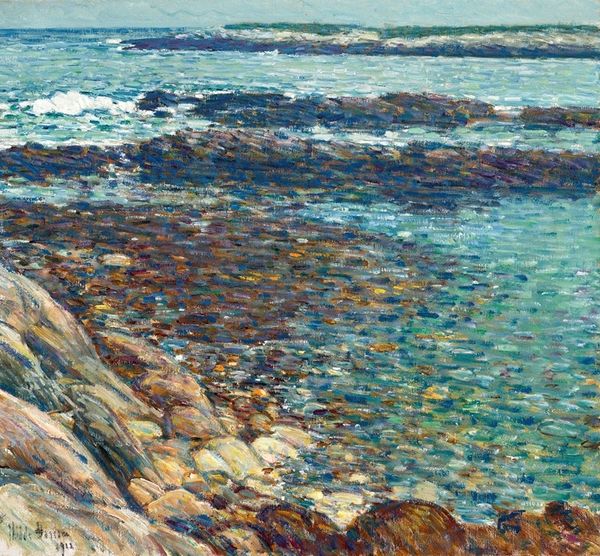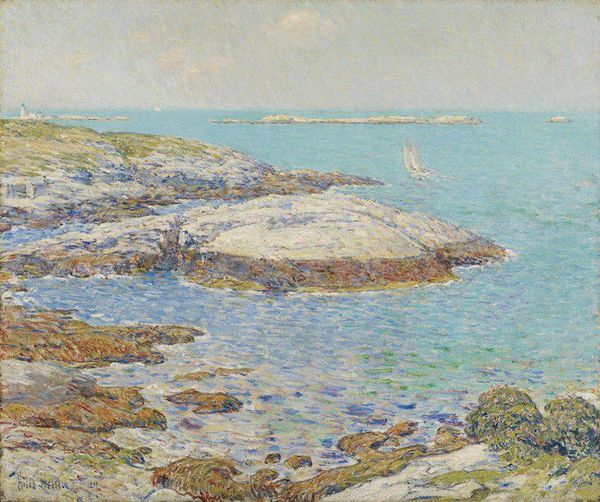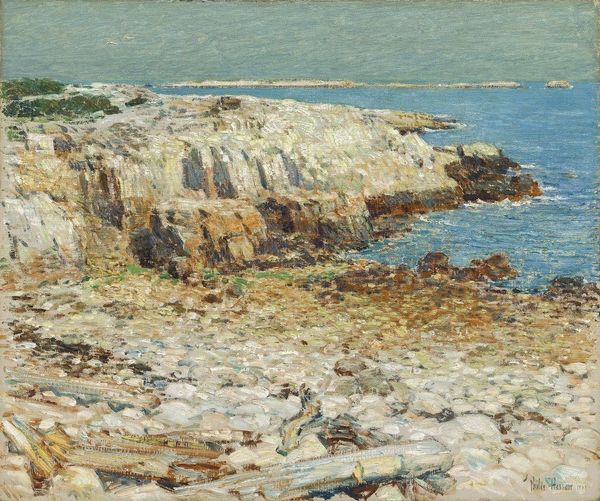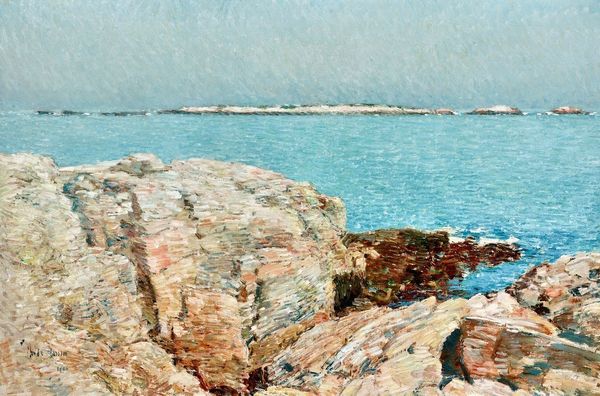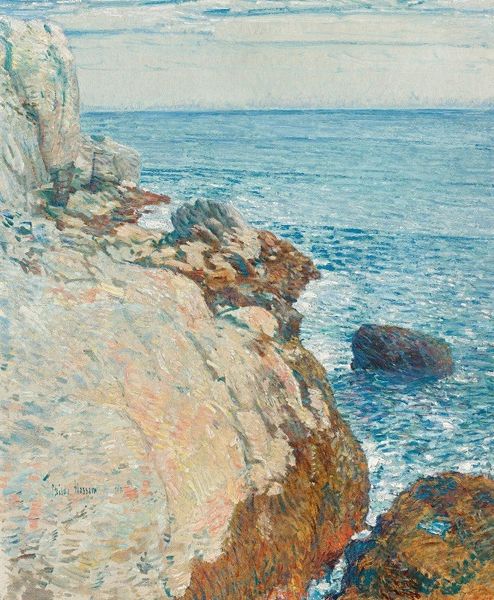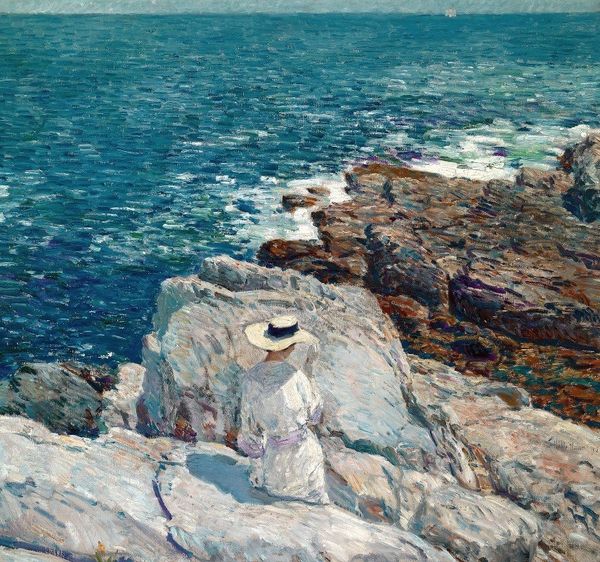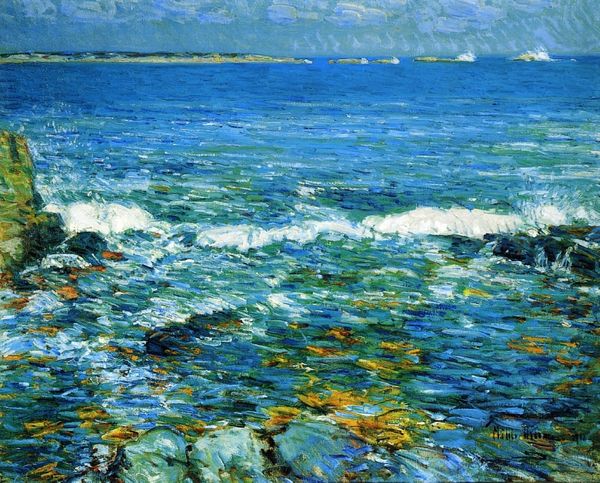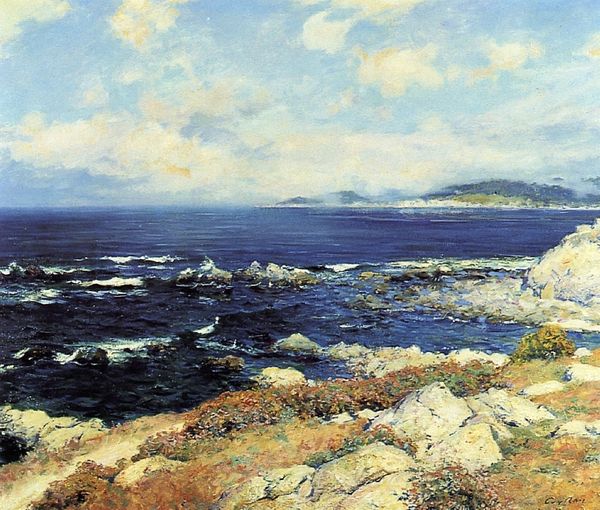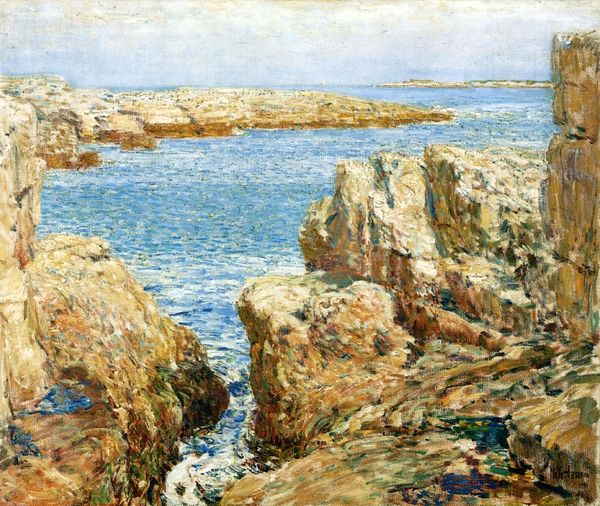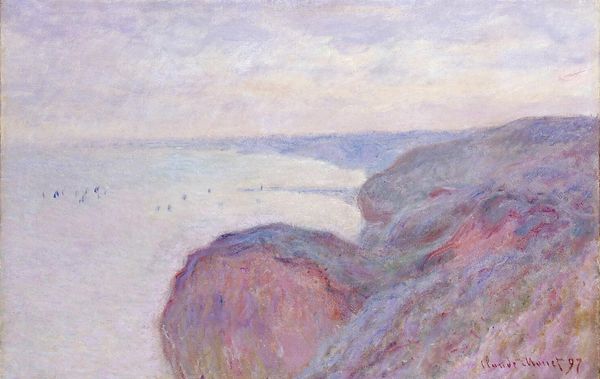
Copyright: Public Domain: Artvee
Curator: Childe Hassam painted this oil on canvas, titled "Rocks At Appledore, Morning," in 1909. Hassam was a prominent American Impressionist, and this work exemplifies his fascination with light and color. Editor: It feels very still. Quiet. I'm struck by how the texture of the rocks dominates, but the water has such an inviting coolness. Curator: Hassam was indeed captivated by the interplay of light and shadow, evident here in the broken color technique. This location, Appledore Island, was part of the Isles of Shoals, a hub for an artist colony. These sites, initially leisure locations for urban elites, offered artists refuge away from cities, inadvertently influencing artistic expression reflecting those socio-cultural shifts. Editor: Knowing that informs how I view it. Was he trying to depict something other than pure aesthetics? It’s an interesting moment—an island refuge. One must remember who can even afford access to an island. There is something performative about even his chosen aesthetic in my opinion, this speaks to the rise of the middle class. Curator: Yes, I agree that the rise of middle class created leisure spaces, therefore there was creation of spaces that appealed this class through aesthetics, but how are the socio-political realities integrated to art world? Editor: Absolutely. The narrative around American Impressionism frequently detaches itself from considering who benefitted, at the time, from access to these leisurely spaces and indeed, from possessing art in general. Hassam was part of that system, regardless of if he intended to be. Curator: Right! And, this location itself was not untouched by the realities of its time. Considering broader historical narratives brings complexities and allows us to consider how socio-political structures intersect. It challenges the assumed universality and timelessness that have been typically associated with artistic genius. Editor: Precisely. It prompts necessary dialogues about access, representation, and the ongoing responsibility to critically engage with art's social role, while acknowledging art's inherent power within this context.
Comments
No comments
Be the first to comment and join the conversation on the ultimate creative platform.
